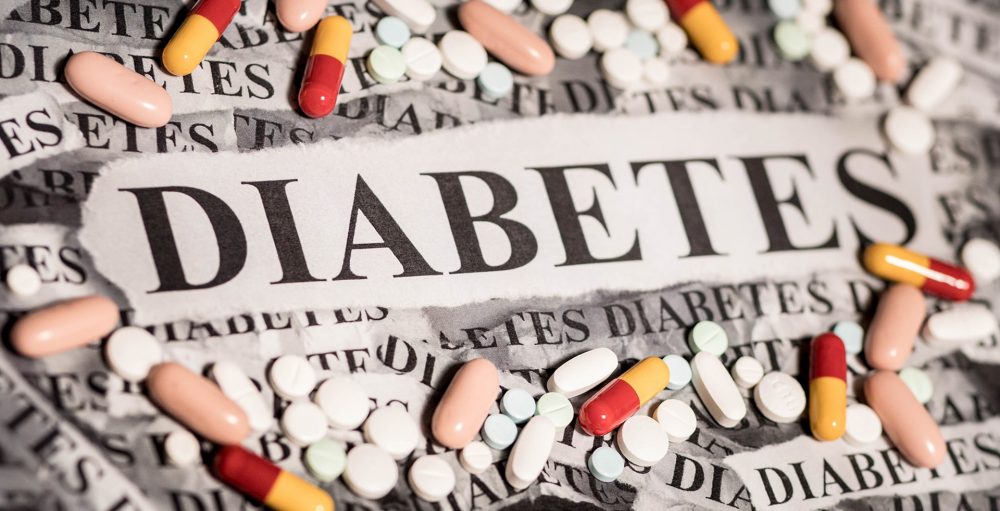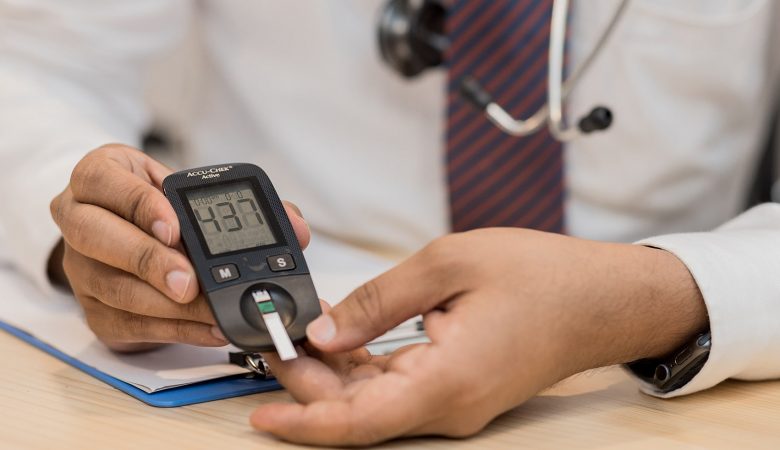In diabetes management, there are two therapy approaches, pharmacological and non-pharmacological. The first attempt is always non-pharmacological where a healthy diet and regular exercise are used to achieve the desired results. If this is not effective, the pharmacological approach can be combined.
The aim of medication is maintaining normal blood sugar levels, managing symptoms and reducing the possible long-term complications.
The commonly used medication for diabetes includes oral hypoglycemic medications (OHO), insulin or a combination of both. The descriptions below are only to give you information on how your medication works. Medication should only be consumed as prescribed by a doctor.
Oral hypoglycemic agents (OHO)
These medications are given to manage type-2 diabetes. Based on the mechanism of action, OHO is divided into three types, which are:
- Biguanides
Metformin is a biguanide. They lower blood sugar levels by decreasing the amount of glucose produced by your liver. Metformin also helps to lower blood sugar levels by making muscle tissue more sensitive to insulin so glucose can be absorbed into these cells.
- Sulfonylureas
Sulfonylureas work by stimulating the pancreas to release more insulin. There are three second-generation drugs: glimepiride, glipizide, and glyburide. It is possible that you may sometimes develop low blood sugar (Hypoglycemia) with these drugs. sulfonylurea drugs have similar effects on blood sugar levels, but they differ in their possible side effects, how often they are taken, and interactions with other drugs.
- DPP-4 inhibitors
DPP-4 Inhibitors work by preventing the breakdown of a compound called GLP-1. GLP-1 is a naturally occurring compound in the body that reduces blood sugar levels. However GLP-1 is broken down very quickly. DPP-4 inhibitors work by interfering with the breakdown of GLP-1, allowing it to remain active for longer in the body and by doing so lowering blood sugar levels if they are elevated. Sitagliptin, linagliptin, Saxagliptin and Vildagliptin are the available DPP-4 Inhibitors.
- Alpha Glucosidase Inhibitors
Acarbose and miglitol are alpha-glucosidase inhibitors. They help the body lower blood sugar levels by blocking the breakdown of starches in the intestine. They also slow the breakdown of some sugars. As a result of their action, they slow down the rise in blood sugar levels following a meal.
- Oral combination therapy
Because the drugs listed above act in different ways to lower blood sugar levels, they may be sometimes prescribed together for a better overall result.
Insulin
Insulin is essential for patients with type-1 diabetes. In this condition, the pancreatic cells are unable to produce insulin therefore insulin must be given from external sources. Insulin carries glucose from the blood vessels into the cells so that the cells can convert it into energy.
Exogenous preparations of insulin (insulin injected from outside the body) are categorized into groups depending on some criteria includes, how quickly they act, how long their action lasts for.
Insulin is injected subcutaneously (below the skin) with the abdomen, arm, upper thigh, and buttocks being the locations where absorption is the quickest. Your doctor will prescribe for you the insulin that he/she believes is most suitable for your condition.
What about side effects?
As with any type of medication, blood glucose-lowering drugs can have a number of side effects. These potentially harmful effects are listed in the patient information leaflet that accompanies the medication, so make sure you check this before starting your drug treatment. You may not experience any of the adverse effects listed, but if you do, consult your doctor. Your doctor will also be helpful with any questions or concerns you have regarding your medicine.
Some important points to remember:
- Check with your doctor if your anti-diabetic medication is safe to take with any other medication you may be taking some other condition/s.
- read the manufacturer’s leaflet inside the pack so you understand the medication you are taking and any possible adverse reactions you should watch out for.
- Stick to the dosage prescribed by your doctor. If you think you’ve taken an overdose of this medicine consult a doctor as soon as possible.
- Never give your medication to other people, even if their condition appears to be the same as yours.
Diabetes may not be cured but maintaining blood sugar level within normal limits makes all the difference in managing the condition so that a normal life without further complications can be led.
Source: https://www.diabetes.org/diabetes/medication-management/oral-medication/what-are-my-options






Leave a Reply